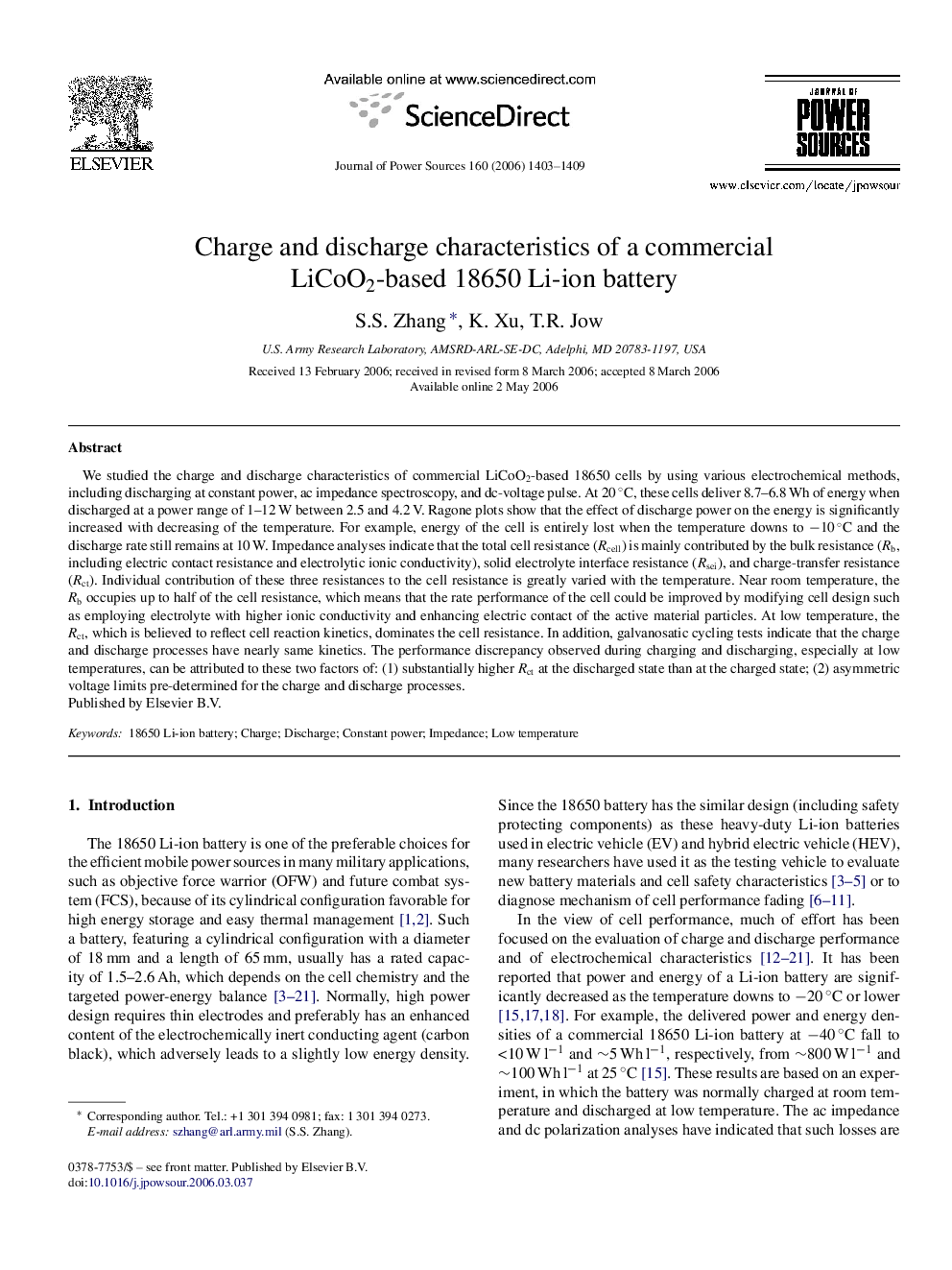| Article ID | Journal | Published Year | Pages | File Type |
|---|---|---|---|---|
| 1287207 | Journal of Power Sources | 2006 | 7 Pages |
We studied the charge and discharge characteristics of commercial LiCoO2-based 18650 cells by using various electrochemical methods, including discharging at constant power, ac impedance spectroscopy, and dc-voltage pulse. At 20 °C, these cells deliver 8.7–6.8 Wh of energy when discharged at a power range of 1–12 W between 2.5 and 4.2 V. Ragone plots show that the effect of discharge power on the energy is significantly increased with decreasing of the temperature. For example, energy of the cell is entirely lost when the temperature downs to −10 °C and the discharge rate still remains at 10 W. Impedance analyses indicate that the total cell resistance (Rcell) is mainly contributed by the bulk resistance (Rb, including electric contact resistance and electrolytic ionic conductivity), solid electrolyte interface resistance (Rsei), and charge-transfer resistance (Rct). Individual contribution of these three resistances to the cell resistance is greatly varied with the temperature. Near room temperature, the Rb occupies up to half of the cell resistance, which means that the rate performance of the cell could be improved by modifying cell design such as employing electrolyte with higher ionic conductivity and enhancing electric contact of the active material particles. At low temperature, the Rct, which is believed to reflect cell reaction kinetics, dominates the cell resistance. In addition, galvanosatic cycling tests indicate that the charge and discharge processes have nearly same kinetics. The performance discrepancy observed during charging and discharging, especially at low temperatures, can be attributed to these two factors of: (1) substantially higher Rct at the discharged state than at the charged state; (2) asymmetric voltage limits pre-determined for the charge and discharge processes.
